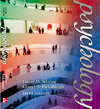 |
1 |  | 
A vivid, long-lasting memory of a surprising, important, emotionally arousing event is known as: |
|  | A) | flashbulb memory |
|  | B) | short-term memory |
|  | C) | long-term memory |
|  | D) | encoding |
 |
 |
2 |  | 
The stage of memory that can store a few items of unrehearsed information for up to about 20 seconds is: |
|  | A) | flashbulb memory |
|  | B) | short-term memory |
|  | C) | long-term memory |
|  | D) | encoding |
 |
 |
3 |  | 
The recovery of information from memory is the process of: |
|  | A) | forgetting |
|  | B) | encoding |
|  | C) | storage |
|  | D) | retrieval |
 |
 |
4 |  | 
The sensory memory, known as _________ memory, stores auditory information lasting up to 4 or more seconds. |
|  | A) | iconic |
|  | B) | echoic |
|  | C) | storage |
|  | D) | encoding |
 |
 |
5 |  | 
The active organization and integration of new information with information already stored in long-term memory is _______ rehearsal. |
|  | A) | procedural |
|  | B) | maintenance |
|  | C) | elaborative |
|  | D) | declarative |
 |
 |
6 |  | 
Which of the following contains memories of how to perform particular actions? |
|  | A) | procedural |
|  | B) | declarative |
|  | C) | explicit |
|  | D) | implicit |
 |
 |
7 |  | 
The subsystem of declarative memory that contains memories of personal experiences tied to particular times and places is known as: |
|  | A) | elaborative memory |
|  | B) | procedural memory |
|  | C) | semantic memory |
|  | D) | episodic memory |
 |
 |
8 |  | 
The distortion of memory by adding, dropping, or changing details to fit a schema is: |
|  | A) | constructive recall |
|  | B) | serial-position effect |
|  | C) | semantic memory |
|  | D) | method of savings |
 |
 |
9 |  | 
The assessment of memory by comparing the time or number of trials needed to memorize a given amount of information and the time or number of trials needed to memorize it again at a later time refers to: |
|  | A) | constructive recall |
|  | B) | serial-position effect |
|  | C) | semantic memory |
|  | D) | method of savings |
 |
 |
10 |  | 
Susie finished a semester of beginning Spanish, and is now unable to easily recall the French she learned in high school. Her forgetting is likely due to: |
|  | A) | decay |
|  | B) | proactive interference |
|  | C) | retroactive interference |
|  | D) | repression |
 |
 |
11 |  | 
According to Freud, we can forget experiences through ________ , the process by which emotionally threatening experiences are banished to the unconscious mind. |
|  | A) | decay |
|  | B) | proactive interference |
|  | C) | retroactive interference |
|  | D) | repression |
 |
 |
12 |  | 
The tendency for recall to be best when one's emotional or physiological state is the same during the recall of a memory as it was during the encoding of that memory is: |
|  | A) | encoding specificity |
|  | B) | context-dependent memory |
|  | C) | state-dependent memory |
|  | D) | tip-of-the-tongue phenomenon |
 |
 |
13 |  | 
Loftus studied the impact of the wording of questions upon the recall of eyewitnesses. She found that estimates of the speed of cars involved in a crash seen on video were greatest when eyewitnesses were asked, "About how fast were the cars going when they ______ into each other?" |
|  | A) | bumped |
|  | B) | smashed |
|  | C) | contacted |
|  | D) | collided |
 |
 |
14 |  | 
The study method known as ________ requires that students spread out the memorization of information or the learning of a motor skill over several sessions. |
|  | A) | massed practice |
|  | B) | cramming |
|  | C) | distributed practice |
|  | D) | mnemonic devices |
 |
 |
15 |  | 
The mnemonic device known as the ______ involves connecting, in sequence, images of items to be memorized, to make them easier to recall. |
|  | A) | pegword method |
|  | B) | link method |
|  | C) | method of loci |
|  | D) | acronym method |
 |



 2002 McGraw-Hill Higher Education
2002 McGraw-Hill Higher Education

 2002 McGraw-Hill Higher Education
2002 McGraw-Hill Higher Education